A Saint for Konkani Catholics!
A Saint for Konkani Catholics!
Mangalore Today News Network
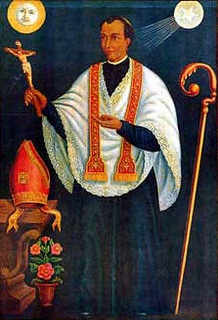
BY I J Saldanha Shet
Mangaluru, March 3, 2015: Time stood still, Wednesday, January 14, 2015 around 9 am. Pope Francis in Colombo, Sri Lanka ceremoniously declared ’Blessed Joseph Vaz’ a saint of the holy Roman Catholic Church. The first from Goa, the first Konkani Catholic, a priest who sojourned and served the flock in Kanara from Honnavar to Ullal and particularly in and around Mangaluru between 1681 and 1687 AD before going to Ceylon. Though Fr. Joseph Vaz came to Kanara in 1681 and returned to Goa in 1684, he was closely connected with Mangaluru until 1687, when he finally traveled through Mangaluru on his way to Mannar and Sri Lanka. ’Sri Lanka’ the tear drop shaped island nation in the Indian ocean, earlier known as ’Ceylon’ and in mythology referred to as ’Serendipity’ and the ’garden of Eden’ the place believed to be where Sitadevi was held captive.
The canonization:
The canonization Mass on January 14, 2015 morning, drew people from across the island nation; eager to see the Pope the second one to visit since St. John Paul II in 1995. It is recalled that it was during that brief visit that Pope John Paul beatified Venerable Joseph Vaz, Pope Francis used the very same altar now to canonize Bl. Vaz a saint.
The crowds like a tidal wave swirled into the street from the nearby railway station and hundreds of buses. Security was tight, and everyone had to walk the last few hundred meters to the ’Galle Face Green’, but the atmosphere was festive and solemn. Free cups of tea were served and the crowd was treated to traditional dancing and music. The park has a capacity of 500,000 and the Vatican spokesman said the crowd more than surpassed the half-million mark.
Fr. Joseph Vaz ’Apostle of Sri Lanka’:
Born on April 21, 1651 to Konkani Catholics Christopher Vaz and Maria Miranda of Goa, at a small town called Benovlim, young Joseph Vaz was ordained a priest in 1676 and served in different parishes of Goa till 1681. From his early days he had a reputation for unusual holiness. He was sent to Canara (presently, Dakshina and Uthara Kannada and Udupi districts) legend says he traveled from Goa barefoot. He had served in Honnavar, Basrur, Kundapura, Gangoli, Mulki, Mangaluru and Ullal Panir it is recorded and largely in Mangaluru. He served as the parish priest / Vicar Forane, at the ancient Panir Church, near Mangaluru. His ambition always was to work as a missionary in Sri Lanka.
St. Joseph Vaz, during his mission in Canara was much sought after as a true ’Guru’. He had deep and real respect for local customs and traditions and sought to bring people closer to God by adopting them in forms of worship. His leadership in adopting the rules of the "oratory" made him the de-facto founder of the "oratorian" order of priests in India. The Oratorians rendered great service to Sri Lanka and it was due to Fr.Joseph Vaz’s services that the Vatican approved this order. Later he learned Tamil and Sinhalese. He brought Goan priests who served with zeal and re-established Catholicism.
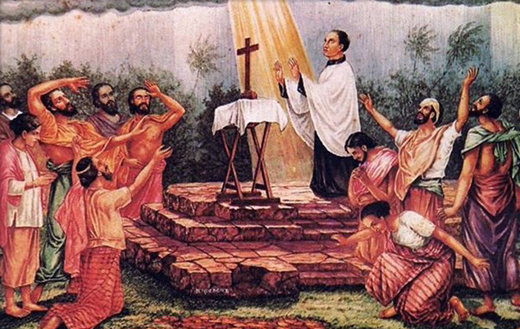
Joseph Vaz entered Srilanka in the difficult guise of a labourer/coolie with his young friend Joao Vaz whom he later recommended for priesthood, though he was of a low caste and it was taboo. In 1687 when he entered the Island kingdom as a collie the Dutch Calvinists were intolerant of other faiths and persecuted them on suspicion.
When the Kingdom of Kandy in 1693 faced serious drought and no means helped, the local King appealed to Fr.Joseph Vaz who had a make shift alter erected with a cross and held prayers, a sudden down pour was caused and this incident brought about a rapid spreading and acceptance of the catholic faith. For more than a decade Fr.Joseph Vaz was the only catholic priest in Ceylon. In his service to God he built not less than 15 large churches, 385 chapels with schools, health care dispensaries and so on.
After 24 years of his expedition in Sri Lanka, Fr. Joseph Vaz, who refused to accept Rome’s order to be appointed a Bishop, died on Jan 16, 1711 worn out due to his hard work for the people. The Kingdom mourned officially for 3 days and rare permission to bury his remains in the Church of Kandy was a mark of singular honour.
His missionary work was not an extension of the colonial mentality, not sponsored, authorized, associated with conquering a status. He gained the protection of a non-Christian King, Vimaladharma Surya II, a devout Buddhist. He used Inculturation (local culture in church worship) an unknown concept then, as a missionary method. He founded Catholic para-liturgy and literature using the two languages and cultures of Sri Lanka, Tamil and Sinhalese; he practiced and taught Meditation.
He educated his servant Joao (John) Vaz, a member of the Indigenous tribe of Kunbis of Goa, and sent him back to Goa with a letter of recommendation to the priesthood. He rescued and expanded the Shrine of Our Lady of Madhu, one of the 5 officially crowned Marian Shrines of the Church. It was crowned for its fame for miracles and for pilgrimages in 1924, even before Fatima. Pope Francis surprisingly on the evening after the Canonization (January 14), traveled to the jungles of war-torn northern Sri Lanka; a deeply symbolic show of solidarity with the victims of the country’s 25-year civil war, to urge Sri Lankans as a whole to forgive one another "for all the evil which this land has known." During the recent war, the Madhu shrine - which was originally built in the 16th century by Catholics fleeing persecution in the northern Jaffna kingdom — again became a place of refuge with thousands of people fleeing there for cover. Francis said in his homily, delivered in English and then translated for the crowd into both Sinhalese and Tamil. "As the life of St. Joseph Vaz teaches us, genuine worship of God bears fruit not in discrimination, hatred and violence, but in respect for the sacredness of life, respect for the dignity and freedom of others, and loving commitment to the welfare of all."
St.Joseph Vaz, is the first non-European native to found a Mission and Church in a “Third World” country; to found a fully native Catholic Religious Congregation; and to be given the official title of “Apostle” (of Sri Lanka) by the Church, for his work in rescuing the Church there.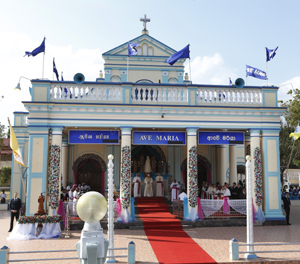 The Church he re-founded in Sri Lanka was persecuted and survived isolation from Rome for 140 years: "Here is a country in which the faith was first preached, and a Church founded with great success to flourish for over a century, by missionaries who being afterwards forced by the political failure of their nation to abandon the field, left this island for good and their converts without churches or priests and under the heel of a persecutor; and a single incognito priest (Joseph Vaz) from another country, who had come of his own accord and laboured heroically with a price upon his head; revived the faith and made many conversions, subsequent political, social and ecclesiastical changes in the country were never able to undo his work. It may be stated that perhaps no instance of such an achievement is known in Christendom.”
The Church he re-founded in Sri Lanka was persecuted and survived isolation from Rome for 140 years: "Here is a country in which the faith was first preached, and a Church founded with great success to flourish for over a century, by missionaries who being afterwards forced by the political failure of their nation to abandon the field, left this island for good and their converts without churches or priests and under the heel of a persecutor; and a single incognito priest (Joseph Vaz) from another country, who had come of his own accord and laboured heroically with a price upon his head; revived the faith and made many conversions, subsequent political, social and ecclesiastical changes in the country were never able to undo his work. It may be stated that perhaps no instance of such an achievement is known in Christendom.”
Catholics make up slightly more than 6 percent of Sri Lanka’s population of 21 million. They are the largest Christian denomination in the country, but are a distinct minority compared to Buddhists, who make up about 70 percent, with Hindus comprising 13 percent. Muslims make up about 10 percent of the population.
Mudipu: Mangaluru’s ‘Miracle Hill’
St Joseph Vaz shrine at Mudipu has been a place of pilgrimage for a long time now and people from Sri Lanka give it importance when they visit the region. Now, this shrine on what is known as ’Miracle Hill’ is preserved and has grown into a unique holy spot for all kinds of people seeking miracles in their lives. It is also said to be the only church at this point of time in India, dedicated to the new Saint. The beautifully built shrine with an ’Ashram’ natural atmosphere was the local centre of celebrations during the solemn Canonization of ’Bl Joseph Vaz’ for three days January 14, 15 and 16. Important personalities from all spheres of the region paid their respects and the poor and marginalised of the area were honoured with special supporting projects.
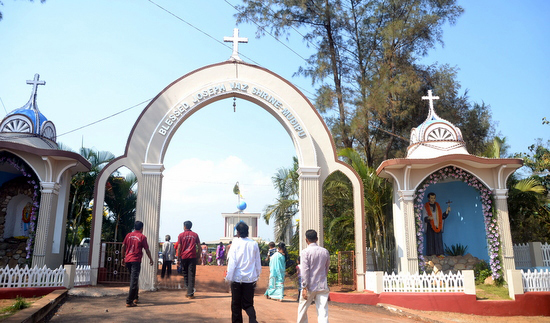
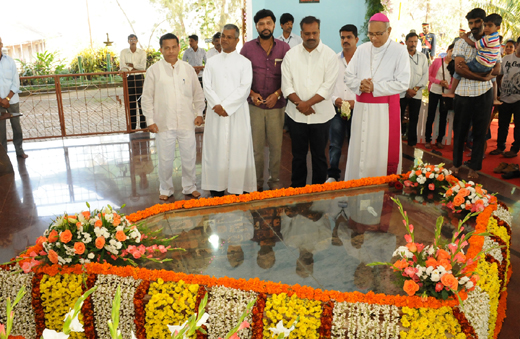
Mudipu Church/Shrine built on picturesque ’Miracle hill’ is a place of great importance which has a special history behind it. St. Joseph Vaz worked in the Diocese of Mangaluru from the year 1681 to 1684, preached the Good News. He went house to house teaching catechism and serving the poor and the marginalised. This brought great joy to the people who eagerly looked forward to his coming. But such saints always are opposed by some and were trying to destroy him and his work. According to local belief he was miraculously saved from an attempt on his life and he moved to Mudipu, the spot of his shrine at present. The place where they tried to harm him and kill him for his faith is marked even today upon the hill at Mudipu with ponds of clear fresh water. Today faithful devotees from all sections of society visit this place with great reverence and devotion. He served as the parish priest / Vicar Forane, at the ancient Panir Church. During his saga (1681-84) in and around primitive Mangaluru in times when Christianity was in it’s infancy, his base is considered to be Mudipu about 20 km SE of the city proper now a developing suburb, Mudipu is near Ullal-Panir. The major church of those times (before the captivity of Konkani Catholics 1784-99) in Mangaluru was ’Our Lady of the Rosary (Rosario)’ the factory church of Portuguese fame. This older church as per historic evidence was South of the present Rosario Cathedral, squarely opposite the rivers’ estuary and the Arabian Sea within the fort, still known as ’Halayakote’. Records credit Fr.Joseph Vaz to have repaired the roof this ancient old church which no longer is found. The present Cathedral came into being at the present spot, only after the return of the Konkani Catholics soon after 1800.
The New Mudipu Parish was erected as parish on June 29,1997 on the Feast of Saints Peter and Paul by Rt. Rev.Dr.Aloysius P. D’Souza; Fr. Alwyn D’Cunha was appointed as the First Parish Priest. The new Parish was dedicated to Blessed Joseph Vaz. November 30, 1997 was a historical day in the history of Mudipu Parish. On that day a small Shrine of Blessed Joseph Vaz was inaugurated in front of the church. The life size statue of Blessed Joseph Vaz was brought in procession from Mudipu bus stand to the shrine. On Aug.23,2001 the foundation stone was laid for the chapel, it was inaugurated on Feb.12, 2004. Fr. Andrew D’Souza took over the charge on May 21, 2004. He gave the whole campus an aesthetic make up. A relic of Blessed Joseph Vaz was brought from Sri Lanka.
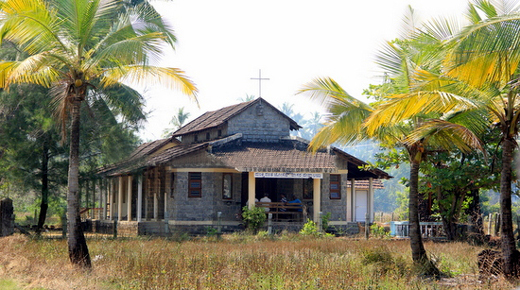
A chapel in the name of Blessed Joseph Vaz in Gangolli.
St. Joseph Vaz’s journey to sainthood in the church:
The process of his sainthood was launched around 1714, three years after Fr.Joseph’s death by the then Bishop of Cochin Rev.Pedro Pacheco. Oratorians, the group of priests he mentored, did not pursue the cause. The Portuguese Govt too suppressed certain vital matters. In 1911 a Pastoral letter of the Bishops of Sri Lanka on the occasion of the celebration of his death bicentennial (200 year Jubilee) conferred on Fr.Joseph Vaz the title "Apostle of Sri Lanka". The investigations to grant him sainthood in the church was revived by the Vatican in 1954.
1954: All 78 Bishops of India, Pakistan and Sri Lanka sign a Petition to Pope Pius XII to beatify Fr.Vaz. 1976: Cardinal Cooray of Sri Lanka petitions Pope Paul VI for action. A summary of the historical documents relating to the life and work of Father Joseph Vaz, is called for. 1985: The documents submitted and the Bishops of Sri Lanka petition Pope John Paul II to beatify Ven. Fr. Vaz. 1993: Miracle required for Beatification is approved by the Sacred Congregation for the Saints and the Pope issues the Decree of Beatification. 1995: The Government and Bishops of Sri Lanka host the visit of Pope John Paul II to Sri Lanka for the official Beatification of Blessed Joseph Vaz. 2015: Pope Francis on January 14 canonized Fr Vaz as Saint in Colombo Sri Lanka.
Pope John Paul II, now himself a saint of the church, in his address at the Beatification of Bl.Joseph Vaz on Jan 21, 1995 at Colombo said in reference to the life of St. Joseph Vaz, " Holiness will always be the first and most effective form of teaching the truths and values of Christ’s gospel. Asia’s venerable traditions of silence, reflection, prayer, asceticism and self denial will find it’s fullest meaning in a living encounter." Now, it has been a moment of realisation in time with Konkani Catholics of the West Coast of India to have an advocate from their midst on the alters of the church.
Highlights of his earthly life (1651-1711)
1651: Born in Benaulim, Goa, India, on April 21.
1676: Is ordained a priest. Volunteers to go to Sri Lanka where the Dutch were persecuting Catholics and had banned all priests from entering the island. The Chapter of Goa refuses his offer because the mission would have meant certain death for him.
1681: Is sent to rescue the almost extinct mission in Kanara, present-day Karnataka in India. Rebuilds the Churches in Mangaluru and Kanara, establishes missions, tends to the sick, ransoms prisoners.
1684: Returns to Goa and joins a band of native Indian priests who formed a community - the Ortorians.
1685: Founds a religious Congregation, the ‘Oratory of St. Philip Neri’, on September 25.
1686: Leaves Goa secretly and sets out for Sri Lanka, via Mangaluru and Mannar in now south Tamil Nadu.
1687: Arrives in Jaffna in the Tamil region of Ceylon (Sri Lanka), with a follower, young John Vaz, both disguised as coolies, they face ignominy.
1691: Nearly captured by the Dutch and is advised to go to Kandy. Is brought into Kandy in chains and imprisoned as a Portuguese spy by the Buddhist King, Vimaladharna Surya II.
1693: Works a miracle of rain during a severe drought. The King releases him and gives him protection and freedom to preach in his kingdom. As in Goa and in Mangaluru, is often seen in ecstasy in prayer. The people call him “Sammana Swami” translates as ’Angelic Divinity’ .
1697: Is joined by three of his compatriot Oratorians from Goa. During a small-pox epidemic in Kandy, the King and the people flee the capital. Fr. Vaz and Fr. Carvalho, tend to the dying and abandoned victims for almost two years.
1705: Dedicates the Shrine of Our Lady of Madhu.
1711: Dies a saintly death in Kandy on January 16, after 24 years of arduous missionary work in Sri Lanka.
- India’s Court Backlogs Keep Drug Lords On The Streets
- Rethinking Drug Seizure Coverage: A Call for Health-Centred Narratives
- Substance abuse - A pressing concern among medical students
- China is winning the trade war without fighting
- Poll promises can become political nightmares
- While India sticks to death by hanging other execution methods vary across the world
- Spiking of drinks, a grave threat for students’ security
- Burden of drugs and substance use among university students in India
- Mangalore medic’s miracle in Bombay 1957
- Needed a national protocol for treatment of substance use disorders
- The Lingering Menace of Drug Abuse Among the Indian Youth—It’s Time for Action
- Need For ‘Students, Alcohol and Drugs’ survey
- New Synthetic Drugs Trapping Youth
- Kashmir Bhavan in Bengaluru: A must visit place
- "MAI and I" Book of Angelic Emotions
- Draupadi Murmu - The New ’President of India’
- Anthony Ashram in the city grows a classic museum
- First College of Fisheries in India - A Golden Jubilarian
- Flushing Meadows - A Vintage Mansion
- The Colonel�s Bequest
- A Mangalorean PM and his RBI Governor Brother: The Extraordinary story of the Benegal Brothers
- There is no higher religion than Truth: Theosophical Society
- L�affaire - Ashu & Yiju of Mangalore
- Mangalore in Kowloon
- 1568 to 2018 AD: 450 years of Christianity in Mangaluru
- Vice President elect Naidu moves on from nadir to zenith, the phenomenal journey
- Embracing the Outdoors: How Heated Jackets Are Revolutionizing Cold Weather Activities
- Efficient and Sustainable Packaging Solutions with FIBCs
- The Hybrid Kilt Revolution | Where Tradition Gets Trendy
- Affordable Elegance | Embrace Style on a Budget with Cheap Kilts
- Unleashing Style and Functionality | Exploring Tactical Kilts
- Mangalore’s Heroic Lady marks 105th Birthday
- Santa the Christmas spirit
- Geriatric care: Mangalore strikes a fine balance
- The Don Who Made Two Empires to Clash
- CHITRAPUR SARASWATS - A Great Kanara Community
- Our new President Ram Nath Kovind’s significant journey to Rashtrapathi Bhavan
- Marriages made in heaven, big fat weddings made in India
- Eid insight - The giver of glad tidings
- CITY INFORMATION
- TRAVEL
- TOURIST INFORMATION
- HEALTH CARE
- MISCELLANEOUS




 Write Comment
Write Comment E-Mail To a Friend
E-Mail To a Friend Facebook
Facebook Twitter
Twitter  Print
Print 

